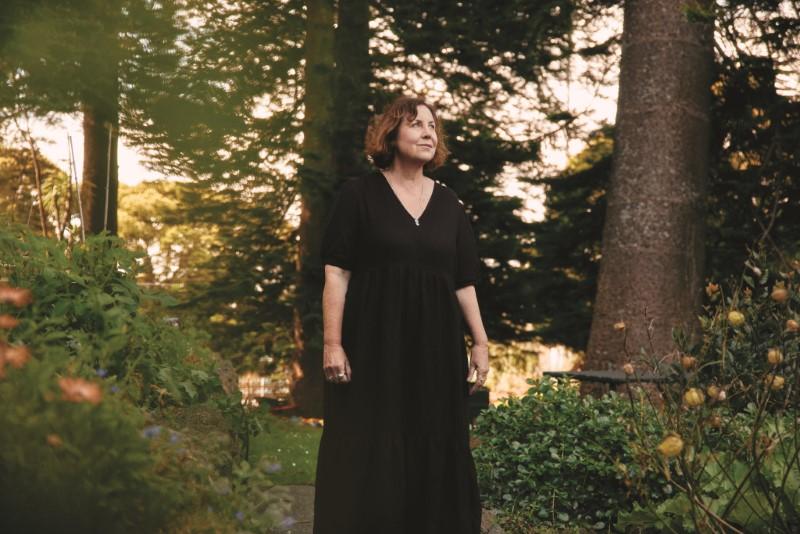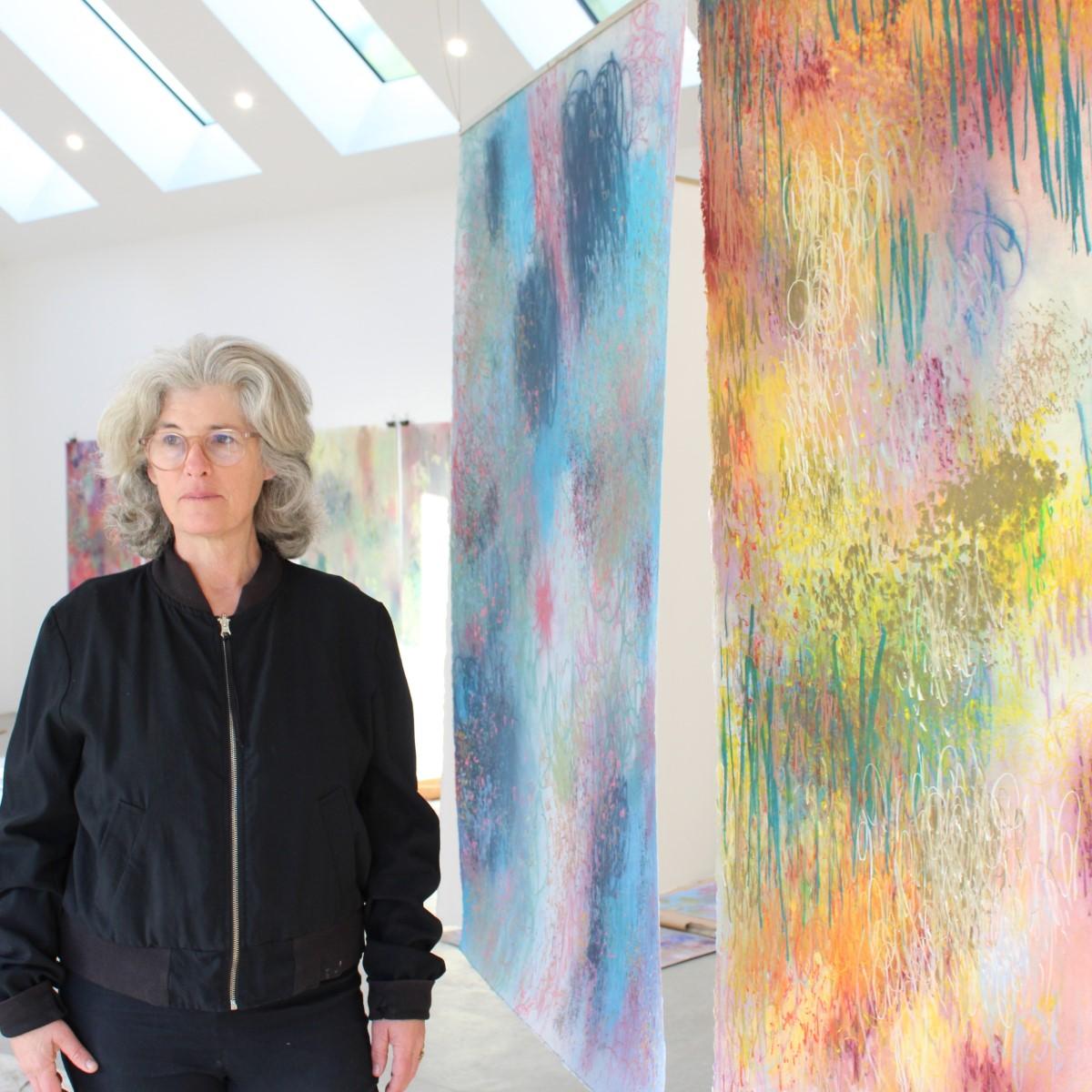Beyond the Veil: Laura Williams
The pastoral scenes of Laura Williams’ highly detailed paintings are poisonously subversive.
Words: Emma Jameson
Photography: Frances Carter
In the 1944 comedy-of-errors-and-terrors film Arsenic and Old Lace, a newlywed man, played by Cary Grant, soon discovers that his domestic bliss is not what it seems: his sweet, caring aunts have been habitually poisoning lonely, elderly men. Replete with over-the[1]top macabre humour, Grant’s film plays with Victorian-era correlations between arsenic, domesticity, and feminine vice and virtue. A popular ingredient in 19th-century women’s beauty products, arsenic also became symbolic of female hysteria after several high-profile cases criminalised women for poisoning their families.
The bright colours saturating Laura Williams’ domestic and pastoral scenes play with the brilliant arsenic-induced hues of Victorian homes – lurid yellows, intoxicating greens, vivid blues. The title of her upcoming exhibition at Laree Payne Gallery, Hamilton – From Arsenic to Found Grace – explicitly nods to Cary’s film and its gendered narratives.
Building upon her series of works exhibited at last year’s Aotearoa Art Fair, Paradise Mound, this new suite of paintings interweaves religious, art historical and cinematic references to vividly articulate a female experience and gaze that is highly personal yet also ubiquitous. All of Williams’ works are part of an intricate, interconnected web, and those familiar with her practice will recognise familiar characters and motifs from her lexicon: defiant female saints, cavorting male bodies, David Hockney paintings hiding in plain sight.
Yet as with any of Williams’ bodies of work these complex layers of references shift in form and meaning, coding an intricate, veiled autobiography of the artist’s feelings and experiences at a moment in time. Given the intricacy of her works, it’s astonishing to learn that Williams doesn’t sketch – rather, she drafts and then paints directly onto board or canvas in her Mount Eden studio, letting the scene transform as she makes visible the machinations of her mind. She’s never short of ideas – her brain, she says, “is always ticking”.
In From Arsenic to Found Grace we meet Saint Julia of Corsica, the patron saint of youth, who is burnt at a stake while an audience of women look varyingly indifferent or distraught; and a bare-chested Saint Lucretia, who looks at us knowingly as she pierces a dagger into her stomach, passively observed by Thomas Gainsborough’s Blue Boy and René Magritte’s The Son of Man. The name of Williams’ grandmother, Lucretia bears more than a passing resemblance to the artist, who was brought up in a Catholic family.
Vividly re-envisioned and recalling Old Hollywood icons, Williams’ saints “reimagine and retell their story as I would have liked to have read them when I was a child… the stories of the tortures they endured and how they held onto their belief was presented to us, growing up in the 1970s, as an ideal to aim for to be a good woman”.
Germinating out of Williams’ residency at the Golden Foundation in New Berlin, New York in 2022, From Arsenic to Found Grace is imbued with traces of that experience. A remote town with derelict barns, Victorian mansions and leafless autumn trees, New Berlin felt, Williams says, “Gothic” – often the only other traces of human presence were hunters’ gunshots ringing through the woods. The resulting paintings reflect this haunting environment, with Williams replacing her typically high-keyed palette with cool inky blues produced in the local Golden paint factory, which set up the foundation.
The Golden Foundation is one in a series of accolades in Williams’ impressive, short career. Working full time as a union organiser with a Masters in Sociology and no formal art training, Williams started to paint 14 years ago, shortly after her mother died. After posting images of her projects on social media, her talents soon drew the attention of Australian gallerist Nick Kreisler (of Melbourne’s Kreisler Gallery), who in 2013 showcased her work in her first exhibition. Since then, Williams has gone from strength to strength, with nine solo exhibitions across New Zealand, Australia and the United States, including a solo show Thinly Veiled at PAGE Galleries, Wellington in mid-2022. In 2018 she was awarded the ChaNorth artist residency in Hudson Valley, New York and the following year was a finalist for three art awards: the National Contemporary Art Award, Craigs Aspiring Art Prize, and the New Zealand Painting and Printmaking Award.
Always modest, Williams describes herself as a “middle-aged union organiser who paints” and can hardly believe her burgeoning success. Her sheer love for painting radiates out of her vibrant works. Williams has for a long time felt that her experience of the world is different from how many others perceive it. Sharing her works is rewarding, she says, because it’s a way of discovering that there are people out there who are likeminded.
NICHOLAS BUTLER
Curator & Collections Manager, The Wallace Arts Trust
“I was aware of Laura Williams‘ work in our collection as I manage our acquisitions. I had a close review of her practice when I curated a large exhibition from our collection titled Fumbles for Rhymes. This show explored the use of humour by Aotearoa New Zealand artists. Laura’s dolls house installation Paradise Mound (mixed media, 2021) was the key publicity work.
I find Laura’s practice compelling as her work resonates in many ways. There’s a lot of humour and wit, while harkening to other art forms. There are traces of folk art, and other art historical (Henri Rousseau) and historical sources.
The critical importance of her work could be through gender. She turns the male objectifying gaze on its head in many paintings. Men are looked upon as sexually desirable and vulnerable, and that’s usually how women are portrayed in media and art.
Laura shows how artists draw upon biographies, their life stories in particular. She had a Catholic upbringing and there are many references to religion.
In this sense, she highlights the importance of lived religious experience in our secular times.”
LAREE PAYNE
Director Laree Payne Gallery, Hamilton
“I have represented Laura since 2018, for five years. Laura was one of the very first artists who joined Laree Payne Gallery, I had been watching Laura and her work since before the gallery opened and was thrilled when she came on board.
Laura’s paintings have steadily increased in price year on year since we began working together. Price increases have occurred in parallel to the growing collector base Laura has developed which led to a sold out presentation at the Aotearoa Art Fair just last year, 70% of which sold on the first day. In her upcoming exhibition, Arsenic to Found Grace, works will likely be priced at $3,500 – $6,000NZD, remaining accessible to those newer to the market.”
This article was originally published in Art Collector issue 104, April-June 2023.










